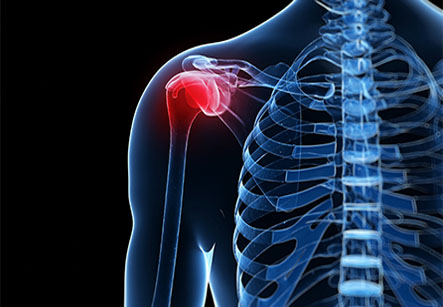Shoulder Arthroscopy
Introduction
Arthroscopy is a procedure in which a small camera (arthroscope) is inserted for examining or repairing the tissues inside or around the shoulder joint. It is done through a small skin incision near the shoulder.
The shoulder joint is a ball and socket joint between humerus or arm bone and scapula. The movements of the joint are mediated through a group of muscles and tendons called as rotator cuff. This cuff covers the shoulder joint. When overused or injured, the tendons in the rotator cuff can tear off.
Indications:
Arthroscopy can be done for various shoulder problems like:
1. Torn or damaged cartilage ring (labrum) around the joint.
2. Shoulder instability-dislocated or loose joint
3. Torn rotator cuff
Iran ranks among the top 10 countries in orthopedics and Iranian surgeons perform high quality orthopedic surgeries at highly affordable prices

4. Damaged biceps tendon
5. Bone spur impinging on the rotator cuff causing shoulder impingement syndrome.
6. Loose bodies in the joint
7. Rheumatoid arthritis of the shoulder joint or end of the collar bone
Before the Procedure:
1. Patient should stop anti-inflammatory drugs like aspirin at least a week before surgery.
2. Medications being taken for other conditions like diabetes, heart disease, blood pressure should be continued with advice from the treating doctor.
3. History of smoking or alcohol drinking should be told to the surgeon. Smoking should be stopped if possible as it interferes with the wound healing.
4. Recent history of cough, cold, fever, viral infections, or other illnesses should be informed to the surgeon.
Procedure:
Recovery can take any time between 1 to 6 months; a shoulder sling is given to wear for about one week following the arthroscopy.
This procedure is usually done under general anesthesia. In some cases, regional anesthesia is used in which only the operative arm is numbed so that there is no pain in that specific area. It can be supplemented by intravenous sedation.
This procedure is performed as follows:
• Examination of the joint
1. An arthroscope is inserted through a small incision and it is also connected with a video monitor in the operating room for supervising the procedure.
2. All the tissues of the shoulder joint i.e. the cartilage, bones, muscles, tendons, ligaments and nerves are examined for any disease.
3. For repairing any damaged tissues, the surgeon makes one to three more tiny incisions and handles other instruments through them. Damaged tissues can be removed or repaired.
• Definitive correction of damage:
With the help of video monitor, the surgeon can perform various procedures such as
1. Rotator cuff repair: in case of damage to rotator cuff, the edges of the torn muscles are brought together. The tendons are again attached to the bone with the help of sutures or small rivets which anchor the tendon strongly to the bone. The anchors are made up of metal or plastic. They need not be removed
2. Impingement syndrome: In this case, a bone spur attached to a ligament causes pain and inflammation in the shoulder. Damaged or inflamed tissue is removed from the joint area. Surgeon can cut a particular ligament, called as coracoacromial ligament. Then, the underlying part of the bone called as acromion is shaved off.
3. Shoulder instability: the cartilaginous rim of the shoulder joint is called as labrum. The torn labrum can be repaired by the surgeon. The ligaments attached to this labrum also need to be repaired. A tear on the labrum in the lower part of the shoulder joint is called as Bankart lesion. A similar lesion involving the labrum and the ligament in the upper part of the shoulder joint is called as SLAP lesion.
After the surgery, the incisions are sutured and covered by dressing. The procedure can be recorded by the surgeon.
Sometimes, open surgery is needed if the damage is more. This is usually decided after the examination phase but can also be done later during the surgery.
Risks:
1. Risks for any type of anesthesia
2. Surgical risks like bleeding, infection, blood clot
3. Stiffness of shoulder
4. Failure of procedure
5. Weakness of shoulder
6. Injury to blood vessels or nerves
Recovery:
Recovery can take any time between 1 to 6 months; a shoulder sling is given to wear for about one week following the arthroscopy. This can be followed by shoulder physiotherapy for a variable time depending on the procedure done.
Arthroscopy is better than open surgery as there is less pain and stiffness, less complications, short hospital stay and faster recovery with the arthroscopy procedure.